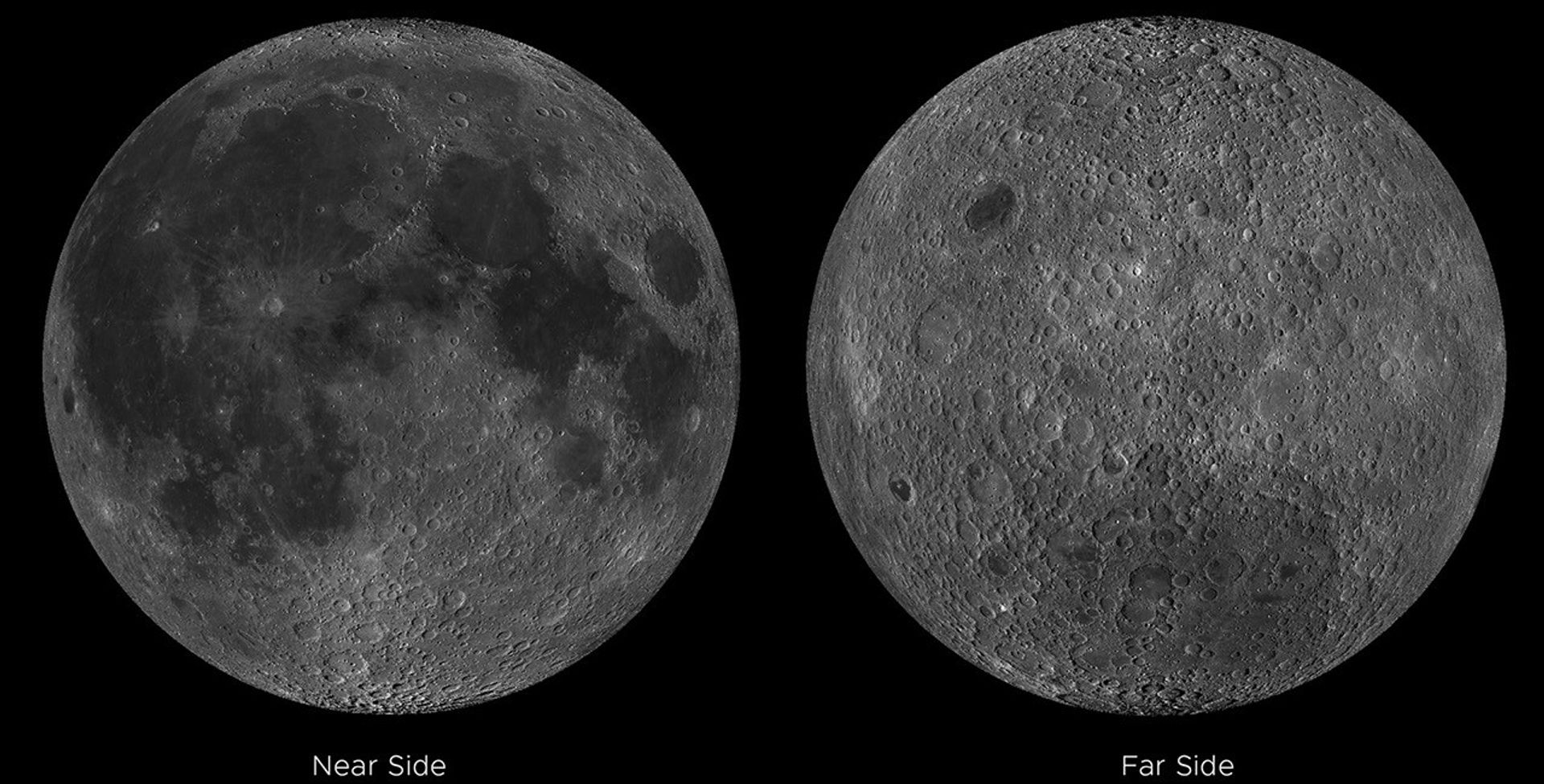You’ve only ever seen half of the Moon in the sky.
Earth’s Moon rotates, but it takes precisely as long for the Moon to spin on its axis as it does to complete its monthly orbit around Earth. As a result, the Moon never turns its back to us, like a dancer circling ― but always facing ― its partner.
This phenomenon, called “synchronous tidal locking,” sounds like a weird coincidence ― but it’s actually quite common. All the solar system’s large moons are tidally locked with their planets. The bigger moons synchronize early in their existence, within hundreds of thousands of orbits. Some binary stars are tidally locked to one another, and evidence is building that many planets beyond our solar system are tidally locked with their stars.
Tidal locking is common, but its dynamics are complex. In the Moon’s case, it started at birth. Earth’s Moon is thought to have formed when a massive object collided with Earth early in its history, splattering some of our planet into space. The hot, molten object that coalesced from the ejected material would have been spinning wildly, with its shape changing as it was pulled at by Earth’s gravity. Earth’s gravitational pull distorts the Moon into a slight football shape even today, but this distortion would have been much more dramatic when the Moon was both closer to Earth and less solid.
The part of the Moon that was pulled toward Earth would have shifted as the Moon spun, but always at a delay, since it takes time for so much material to rise and then later fall. This means the Moon’s bulge was always a little out of alignment with Earth, yet always being pulled toward alignment by gravity. As the Moon bent and fluxed in this tug of war, energy was released in the form of heat. As the energy dissipated, the Moon’s rotation slowed until a single spin on its axis took the same amount of time as one trip around Earth. In this state, the bulge on the Moon was no longer shifting relative to the Earth, therefore no more energy needed to be dissipated by this particular process, and the spin rate stopped changing.
At the same time as energy was being burned off within the Moon and slowing its rotation, energy was being added to the Moon’s orbit by similar tidal forces, causing the Moon to slowly drift away from Earth.
This story doesn’t end in the past. The same process is happening now. The Moon continues to move away from Earth at a rate of about an inch-and-a-half (4 cm) per year, its drift slowing as it goes. The energy propelling it away comes primarily from Earth’s oceans, which both bulge out in response to the Moon’s gravity and exert a gravitational pull of their own on the Moon. Earth’s bulging oceans don’t exactly match up with the position of the Moon, they’re always a little out of sync because it takes time for all that water to shift and pile up. This interaction does two things: it creates friction that slows Earth’s own rotation, and creates forces that change the Moon’s orbital speed, causing it to fall farther away into space. Other, weaker forces ― related to such factors as the Moon’s tilt, its elliptical orbit, Earth’s deep interior, the influence of the Sun, and more ― also affect the Moon’s motion, but these cause only very subtle changes, and sizes and distances are not to scale.
About 50 billion years from now ― if the Moon and Earth could somehow avoid the eventual death of the Sun ― the Moon would be so far away, and its orbit so large, that Earth would also tidally lock to the Moon. Only the population of one lucky half of our world would ever see the Moon.
Humanity may never get to witness that from Earth, but perhaps our relocated descendents will someday gaze up at the tidally locked Moon of another planet. So tonight, when you see the Man in the Moon gazing down at you fondly, remember the processes that keep him there, and think about the other planets in our solar system and beyond where different moon faces beam endlessly down on strange terrains.
Writer: Tracy Vogel
Graphic Designer: Vi Nguyen
Science Advisors: Oded Aharonson (Planetary Science Institute), Wade Henning (NASA's Goddard Space Flight Center), John Keller (NASA's Goddard Space Flight Center)





























